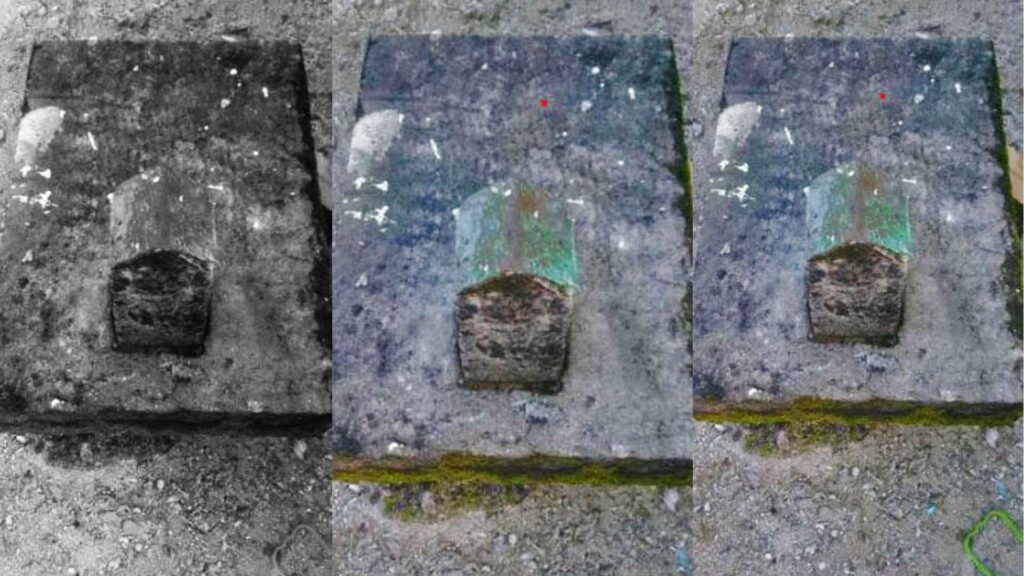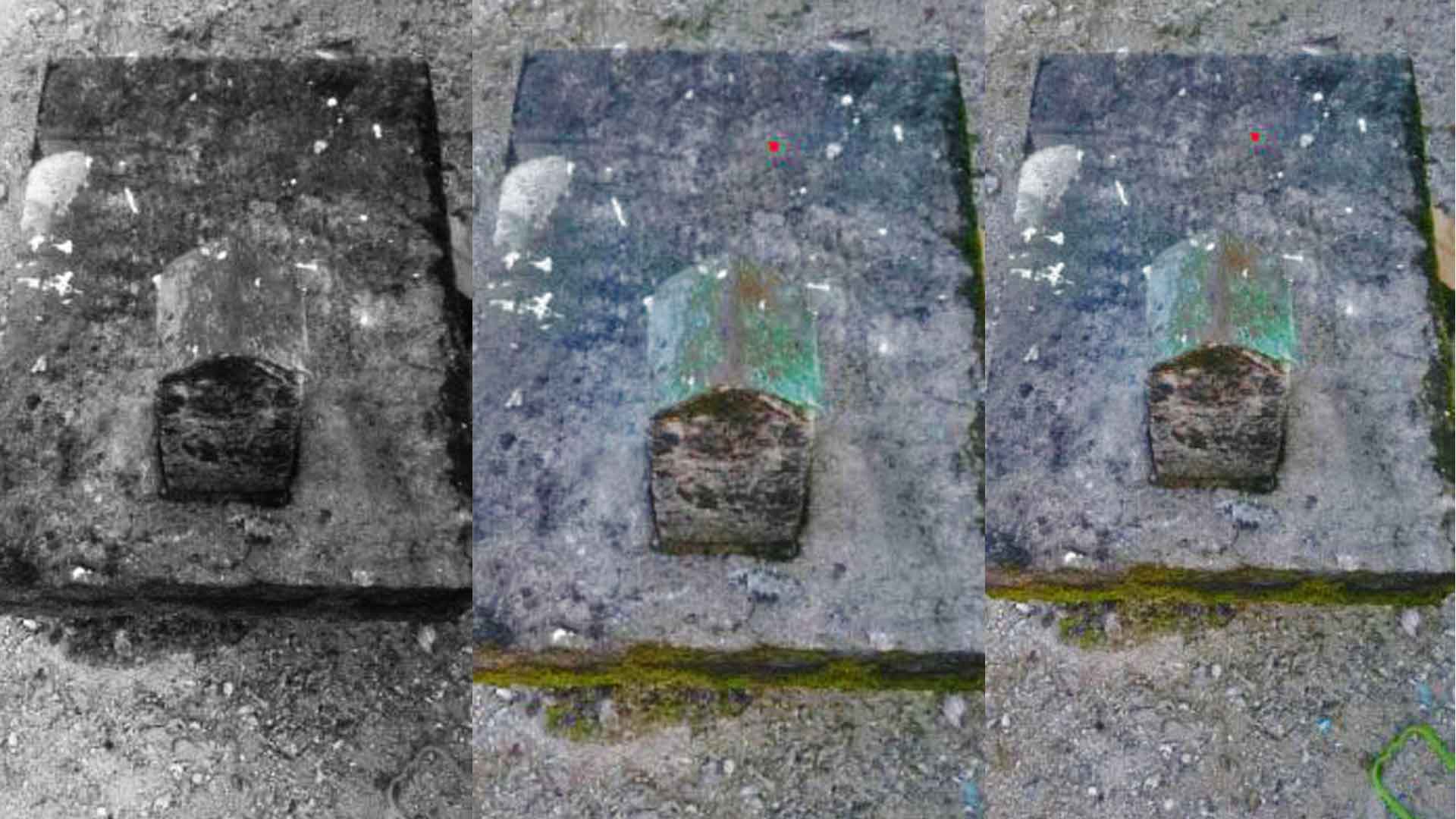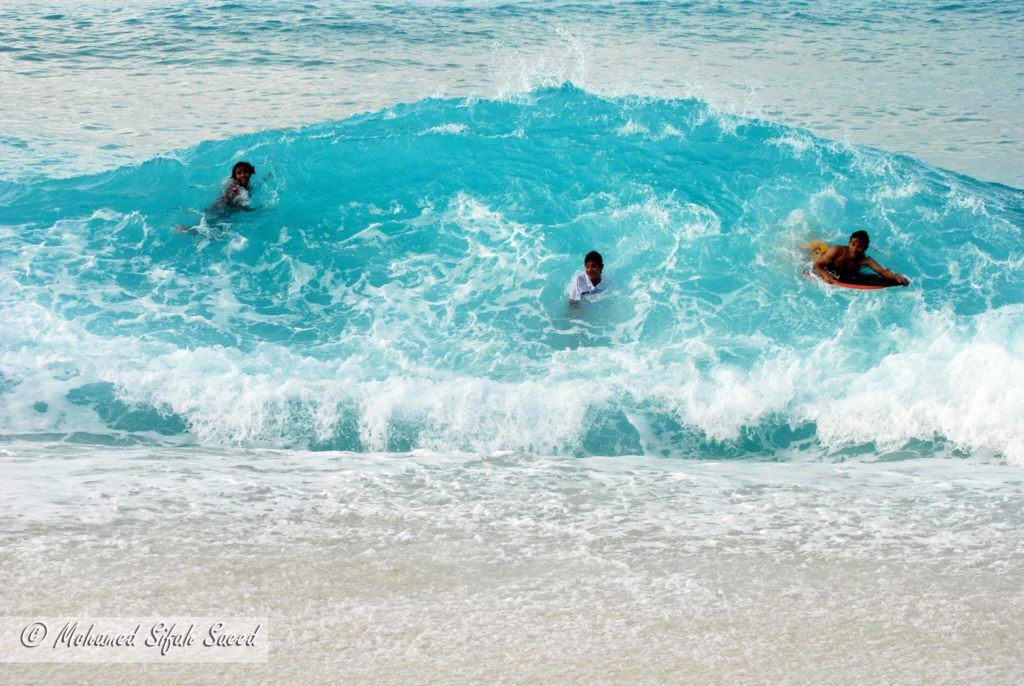
In ancient days, despite a lack of resources and available technology, the people of Fuvahmulah were bright to live a peaceful life. They followed ethical, religious, and civilization principles. They lived a dignified life.
My uncle, Rafeeqbe, told me that in the early days, they used to carry huge coconut palm trunks with the help of the water in the house reef during high tide. If a trunk or timber had to be transported from the ward of Dhadimagu to Funaadu, the trunks were dragged or pulled along the surface of the sea and carried to the desired location. That is how they adapted their life according to the resources and agility.
Time is imperative in life. People on our island used a piece of stone to indicate time: especially to call for prayer, time was important. These sundials are called vaguthubalaa gal. In the cemetery of Dhadimagu mosque, located in Dhadimago Fanno area, an old sundial is still present.
This sundial is made from coral stone, curved in a rectangular shape. A raised part made up of stone gnomon is fixed. The tip of the gnomon is V-shaped. This vertical shaft determines the altitude of the sun or the latitude of a position by measuring the length of its shadow cast at noon.
In sundials, the gnomon is a piece of rod, stone or other sharp object, calculated and fixed in such a way that a sharp-edged shadow is cast onto the dial plate. This sharp edge of the shadow – either produced by the side or the tip of the gnomon – called style, is used to read the lines on the dial plate. A dial plate is often made of copper or bronze and is marked with lines that indicate time and date.
According to elderly people, some specially designed sundials were believed to forecast the weather. These types of sundials are found in the cemeteries of some old mosques in the Maldives. Some historians say that some of these stones were also built on old Buddhist temple foundations, by the temples’ orientations.




